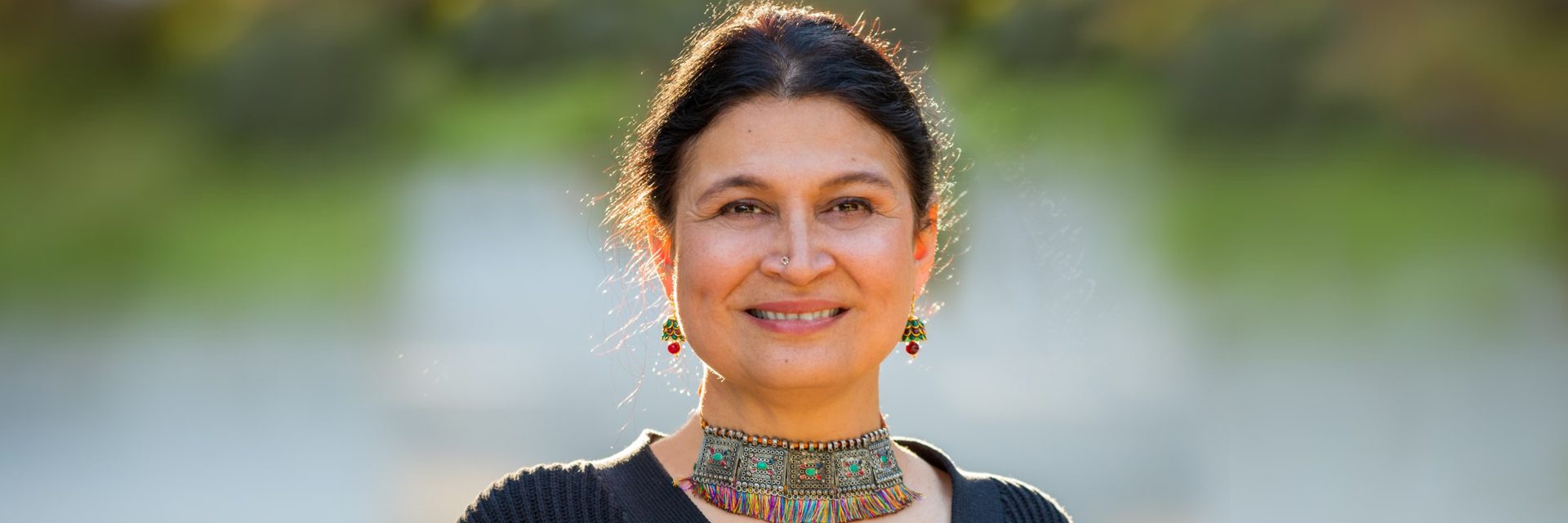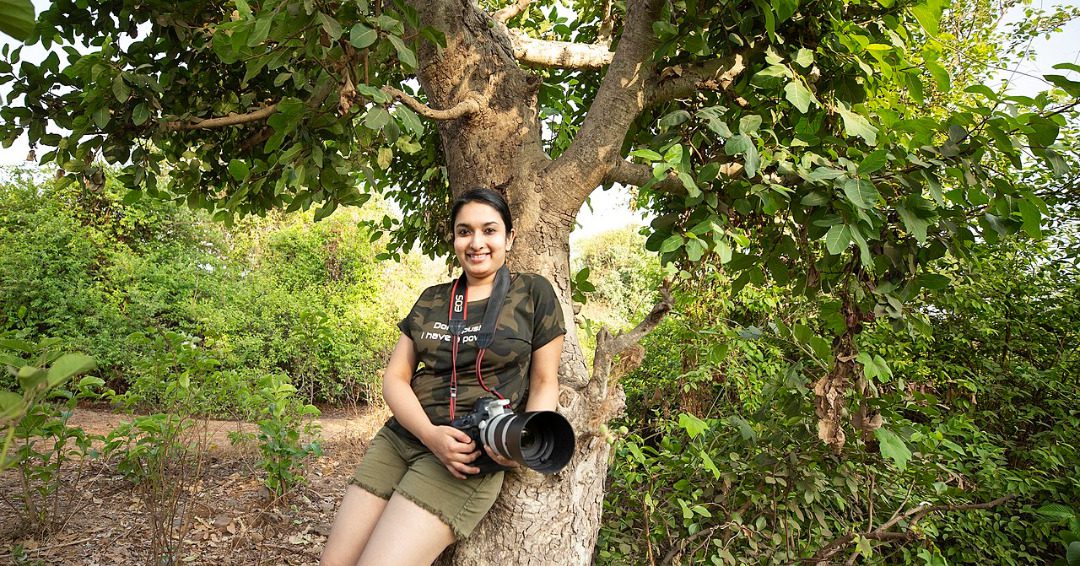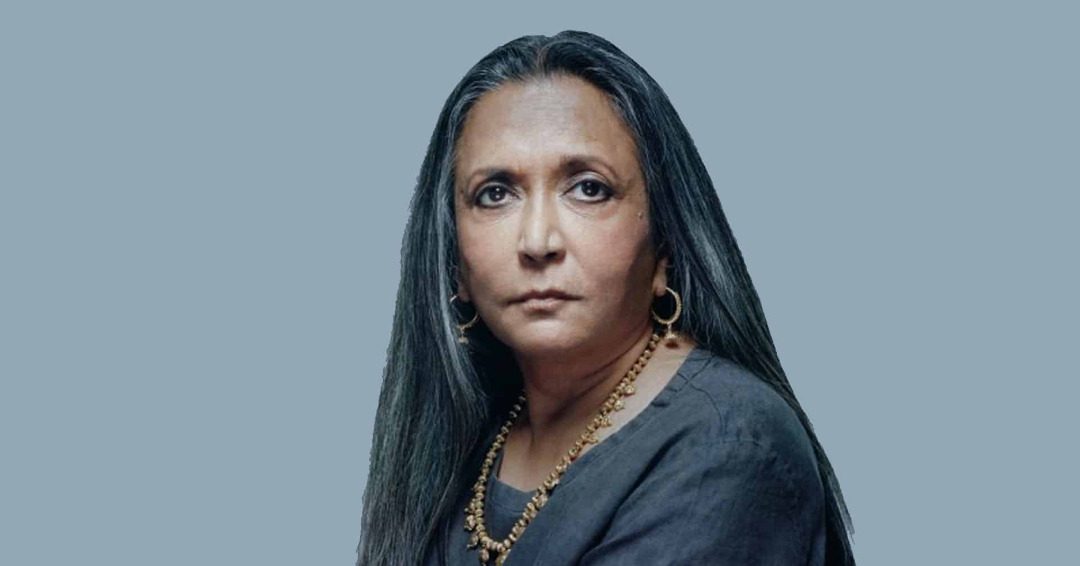(January 13, 2022) As a young girl growing up in the Indore of the 1980s, Indian filmmaker Alka Raghuram watched films on rare occasions. Back then with no home television sets or access to world cinema, her exposure to the world of films was limited. Yet, when the artistically-inclined Alka came across a filmmaking course at a San Francisco community college, the whole idea fascinated her enough to want to study the nuances of filmmaking. Today, the award-winning Indian filmmaker brings to life hitherto overlooked subjects with a fresh perspective.
From exploring the lives of Muslim women boxers in Kolkata with her award-winning film Burqa Boxers to highlighting the abuse women face on an everyday basis, and creating video vignettes for dance performances, this Indian-American filmmaker has a finger in every pie. Burqa Boxers premiered at the MAMI Film Festival in 2016 and earned rave reviews. The documentary also screened at the Locarno Film Festival where it received the Best Project Award.

A still from Burqa Boxers
From UP to the US
Born in Uttar Pradesh’s Bahraich, Indian filmmaker Alka spent the first eight years of her life in Himachal Pradesh where her mother Saroj Mehrotra worked as a teacher. At age eight, the family moved to Indore where her father Balraj Mehrotra worked with a company that manufactured welding electrodes. Back in the 80s, Alka says, Indore has its own constraints. “I was always artistically-inclined and wanted to pursue a course in applied arts, for which scope was limited in Indore,” says the eldest of three siblings, who then moved to Mumbai to do her fashion designing from SNDT College.
“Back then, matters like whether one should be allowed to go to a co-educational college or opt for something close to home were major factors,” Alka tells Global Indian. “However, my maternal grandfather was quite liberal and my mother moved out of home as a young woman to study, and at 21 got a job and lived alone in Himachal Pradesh. Which is why we could think of going beyond the norm and expand our horizons,” the Indian filmmaker recalls.
Following her graduation, Alka worked with a garment export firm for a years. It was around this time that she met her husband V Raghuram, an engineer. After they got married, Raghuram got an opportunity to move to the US, and the couple set up home in California’s Bay Area in the early 1990s.

A bend in the road
“The first couple of years were spent in getting oriented to the new way of life. Everything was so different,” recalls this 53-year-old Indian filmmaker. “I’d watched the film Edward Scissorhands and the whole place was like in the movie. I’d read Vikram Seth’s The Golden Gate and when we drove down the Golden Gate Bridge and had coffee at Caffe Trieste, I couldn’t believe that the books I’d read or the movies I’d watched were coming to life,” she says.
A shift like this, though disorienting, also afforded her the opportunity to re-evaluate her future choices. “I wanted to go back to school. Given my childhood passion for painting and illustration, I thought I’d become a children’s book illustrator. That’s when I came across a filmmaking course at a local college. It seemed so esoteric; growing up filmmaking wasn’t something that I’d even considered. When I took the course, I fell in love with the art,” she says.
Alka went on to undertake several filmmaking related classes before she decided to pursue her masters in filmmaking from San Francisco State University. By that time, she had two young children, but the love for filmmaking spurred her to juggle both worlds. “It was a very hands-on course. I particularly enjoyed Professor Bill Nickels’ classes. They grounded my work in ethics, how to approach people and represent them. It taught me the power dynamics and made me aware of the moral component of filmmaking,” avers Alka, who made her first film after her graduation.

A still from Burqa Boxers
Entry into cinema
Panchali, a five-minute short, stemmed from a newspaper article she’d read about a girl being sexually assaulted on a Mumbai local train and how no one stepped forward to help her. The incident left an indelible mark and Panchali was a juxtaposition of this girl and Draupadi’s disrobement from the Mahabharata. “It was an experimental film with a lot of back and forth between the two women,” she says of the film that went on to become a quarter finalist at the Student Oscars.
In 2014, Alka collaborated with dancers Pandit Chitresh Das (Kathak) and Antonio Hidalgo Paz (Flamenco) to create video vignettes for their performance Yatra. Ever since, she has been collaborating with the Chitresh Das Dance Academy and in 2022, she is set to work on their new production Invoking the River that will throw the spotlight on the River Yamuna and its degradation.
Claim to fame
In the mid-2000s Alka also came across several reports in the media about Muslim women boxers in Kolkata. The story fascinated her and led her to reach out to Asit Banerjee, who was at that time associated with the West Bengal Boxing Federation. “When I read about these women, I was fascinated and I also identified with them in a way, given my upbringing in Indore of the 80s. I wondered if these women had a support system and what led them to think of and see a world beyond their social structure,” she says, adding that Asit introduced her to Razia Shabnam, who coaches these women boxers in Kolkata.
“I visited Razia and she ran this coaching centre out of a raggedy gym. She also took me to New Light, an NGO that rehabilitates children of sex workers, whom she taught as well. As Razia worked, I followed her and met several young girls. As I did, many stories and characters emerged,” says the Indian filmmaker, who spent the first year establishing a rapport with her subjects.
In the meanwhile, she received a development grant from ITVS that helped her begin filming with a minimal crew. Four years later when the film was ready, she was invited to the Locarno Film Festival, where she won top honours. She also met a French co-producer 24 Images, which helped her complete the film.

When the film premiered at MAMI in 2016, it was very well-received. “That a woman like Razia lives and thrives in her community came as a surprise to many. That feminism came from within her made a lot of us, including me, step out of our bubbles,” explains the filmmaker, who also loves dabbling in ceramics and sculpting.
Currently, she is preparing to begin filming her feature film – Ayna. “It is a psychological thriller and I hope to begin filming later this year. I’m also working on a documentary called Blueprint of Love, which explores the kinds of facilities that people with serious mental illnesses require, and how to design them,” says Alka, who loves long walks in her neighbourhood, and reading and painting too.
As she shuttles between India and the US, she says she misses India tremendously. “It is home. Every time I step into the airport here, and the visceral smell of India hits me, I know I am home,” she says.
For budding filmmakers, she advices, “Don’t try to find different stories. It’s quite likely that someone else has the same idea. What will set you apart is your perspective and your vision. It is what I have to keep reminding myself when I’m picking a subject.”
- Follow Alka Raghuram on LinkedIn



